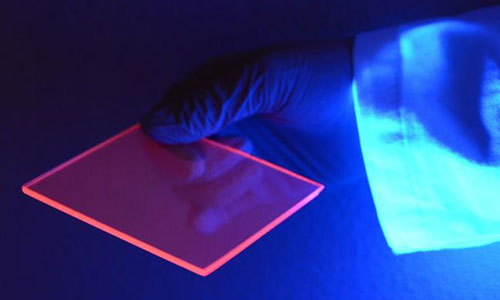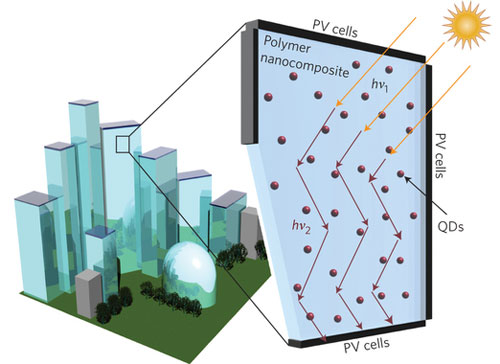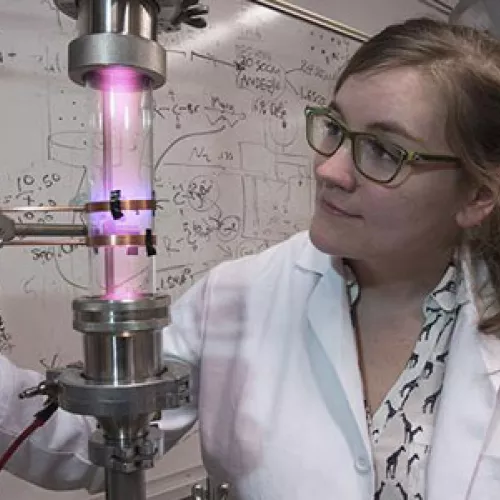The CERTs statewide staff are housed at the University of Minnesota on the St. Paul campus. There is a lot of interesting research happening around here, and when we recently read that researchers were working with high-tech silicon nanoparticles to collect solar energy in windows, man, that got us pretty excited.
OK, it might be a few years away, but hey, still exciting. We spoke with Dr. Uwe Kortshagen, Head of the Department of Mechanical Engineering, to learn more.
Have you had any window manufactures express interest in this technology? |
|
| Dr. Uwe Kortshagen: We have held this technology under wraps, until the publication of our paper two weeks ago. We have since started to reach out to one local window manufacturer, but have no concrete plans yet. Pictured at right: We can see the concentration effect when the slab is illuminated by a “black light” which is composed of mostly ultraviolet wavelengths. |  |
When do you think this technology might be market-ready? |
|
| Dr. Uwe Kortshagen: I believe that the technology is still in early stage research. A lot will depend upon whether we will be able to improve the efficiency of the silicon quantum dots that we used in the study, which may be the biggest hurdle. My hope is that we solve this problem in the next 3 years, at which point one could think about introduction into the market. We will likely need to work with a technology partner at that point. |  |
Click here to learn more >>
PS: CERTs tapped into our marketing savvy and decided that we could probably sell a lot of these windows if we call them Solar FREAKIN’ Windows! Watch the video below to see what we mean.


